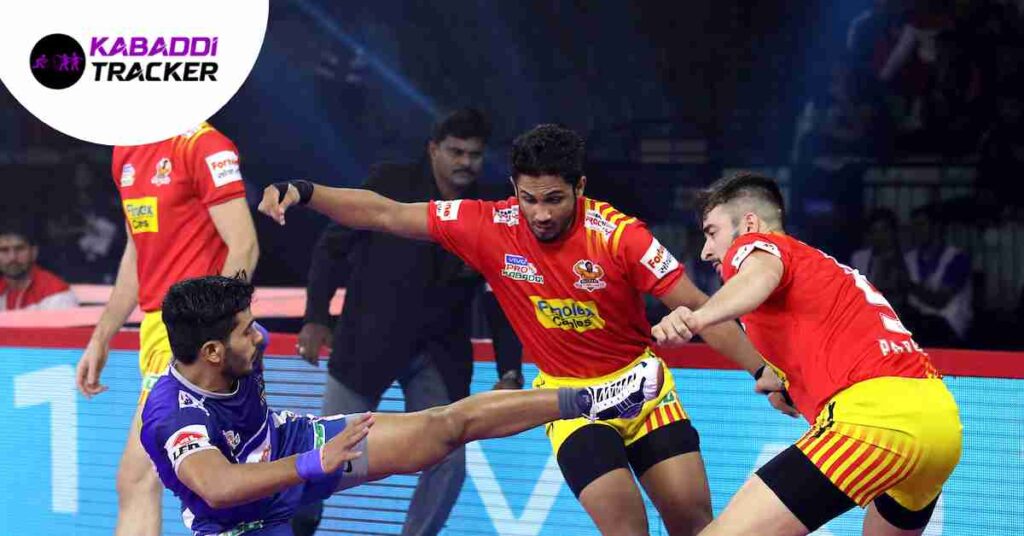Kabaddi, a customary game with its foundations somewhere down in Indian history, has developed into a globally perceived and celebrated game. A unique mix of procedure, strength, and spryness, Kabaddi demands players to display a large number of abilities to outfox their rivals. Among the stockpile of strategies at a Kabaddi player’s removal, the front kick stands out as a fundamental move that encapsulates the substance of offense and defense.
This article digs into the intricacies of the front kick in Kabaddi, exploring its execution, significance, and the strategic advantage it offers to players.
The Life Structures of the Front Kick

The front kick, as its name recommends, involves striking a rival with the foot while maintaining a forward-facing position. Executed with accuracy and timing, this method can possibly be a unique advantage. To successfully perform a front kick, a player should zero in on the following key components:
- Timing: The pith of a successful front kick lies in its faultless timing. Players should measure the distance and development of their rivals before launching the kick. A very coordinated kick surprises the rival as well as keeps them from reacting successfully.
- Footwork: Footwork forms the underpinning of any Kabaddi move, and the front kick is no special case. A player should maintain a fair position, allowing them to progress from defense to offense quickly. The coordination between the kicking leg and the supporting leg is critical for generating power and maintaining soundness.
- Targeting: Exact targeting can represent the deciding moment of a front kick. Striking weak regions, for example, the midriff or thighs can immediately incapacitate the rival, creating a chance for the attacking group to score points.
Significance in Offense
Also Read – List Of Kabaddi Academy in India
In the domain of offense, the front kick fills in as a powerful device for gaining pivotal points. As a raider races into the rival’s portion, the front kick can get defenders unsuspecting. By employing a quick and very coordinated kick, raiders can push defenders back as well as make openings in the defense line. This allows raiders to enter the ‘recoil line,’ a basic region where extra points can be scored.
Besides, the front kick is profoundly viable in disorienting the defenders. A successful kick upsets their coordination and forces them to redirect their consideration from the raider immediately. This interruption can be the brief moment advantage that raiders need to label defenders and secure points.
Strategic Role in Defense

While Kabaddi is predominantly connected with offensive moves, the front kick plays a strategic part to play in defense too. Defenders, positioned on their half of the court, can utilize the front kick to keep raiders from entering their region. By really countering a raider’s endeavor to cross the midline, defenders can deny points to the opposing group as well as gain energy for their side.
The front kick in defense is especially important during ‘sink or swim’ raids, where a raider should score a point to try not to be pronounced ‘out.’ A first-rate kick during such high-pressure circumstances can make a mental benefit, increasing the possibilities of a successful defense and consequently, a circle back for the group.
Mastering the Front Kick : Practice and Training
Becoming proficient in the front kick requires committed practice and centered training. Players need to chip away at their adaptability, strength, and response time. Practices that improve leg strength and nimbleness are fundamental. Additionally, honing the capacity to peruse a rival’s development and foresee their activities is a vital part of mastering the method.
Simulating game situations during practice can assist players with developing the intuition to actually execute the front kick. By more than once practicing the procedure against rivals of varying qualities and styles, players can refine their timing and footwork, making the move instinctive.
Strategies for Successful Front Kicks
1. Feinting and Timing: A successful front kick is often gone before by a feint, where a raider initiates a development to deceive defenders. By faking a raid in one bearing and rapidly changing course to execute the kick in another, raiders can get defenders off balance, creating an opening for headway. Timing is vital in this procedure, as the component of shock assumes a significant part.
2. Cooperative Kicks: Kabaddi is a group activity, and cooperative efforts can intensify the effect of a front kick. In situations where a single defender may be challenging to survive, two raiders can coordinate their front kicks to drive the defenders further back, opening up more space for maneuvering and scoring points.
3. Mental Edge: Aside from its actual effect, the front kick holds a mental benefit. By reliably employing first-rate front kicks, a player gains a standing for being a formidable rival. This standing can cause dithering and uncertainty in the minds of defenders, leading them to rethink their activities while facing that specific player.

4. Transformation to Adversaries: Successful Kabaddi players are flexible in their methods. They adjust their front kicks in view of the style and qualities of their adversaries. Against defenders with excellent deftness, a raider could settle on speedier, low kicks to get them off balance. Against taller defenders, aiming for the thighs or midsection can be more successful than aiming for the abdomen.
Also Read – Who is the king of Kabaddi?
The Evolution of the Front Kick
Throughout the long term, Kabaddi has seen a critical evolution in playing styles and procedures, and the front kick is no exception. Present-day players have integrated components from other hand-to-hand fighting and battle sports to refine their front kicks. Footwork reminiscent of boxing pokes and the accuracy of taekwondo kicks have influenced the execution of this exemplary Kabaddi move.
Mentors and trainers play an essential part in guiding players toward mastering the front kick. They examine game films, distinguish regions for improvement, and configure altered training regimens. These regimens often include activities to upgrade center strength, adaptability, and dexterity, as these elements contribute straightforwardly to the adequacy of the front kick.
The front kick, a seemingly basic yet incredibly strong method, embodies the quintessence of Kabaddi — a game that values actual prowess as well as mental sharpness and strategic finesse. Whether raiders are storming through defense lines or defenders are holding resolute to protect their region, the front kick remains an image of unwavering determination and determined hostility.
As Kabaddi continues to rise above limits and charm crowds around the world, the front kickstands as a demonstration of the game’s capacity to adjust and develop while staying consistent with its customary roots. With each beautifully coordinated kick, each strategic feint, and each cooperative effort, players give recognition to the tradition of Kabaddi while embracing the demands of the present-day contest.
The front kick is in excess of a move; it’s a recognition for the soul of Kabaddi itself — a game that praises the concordance of solidarity, methodology, and the unyielding quest for triumph.



